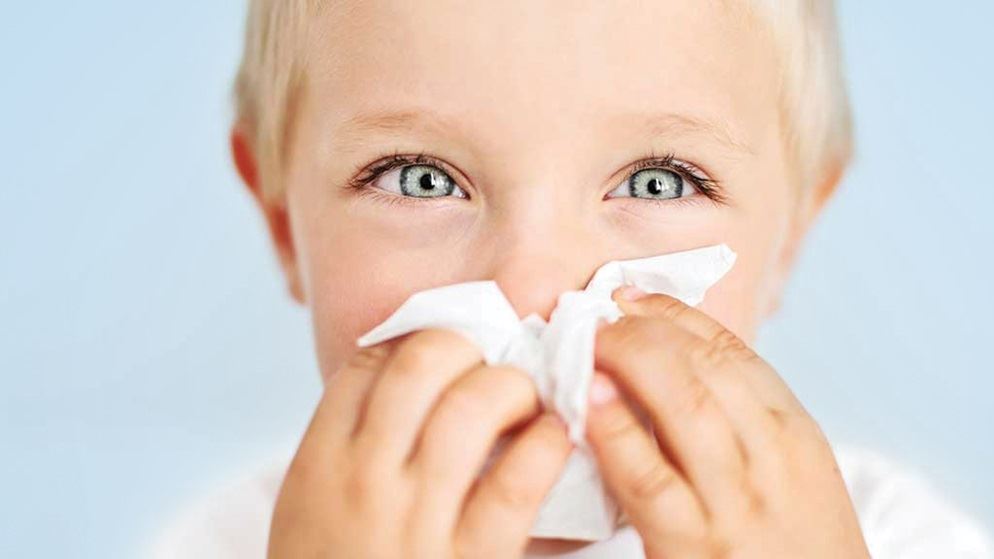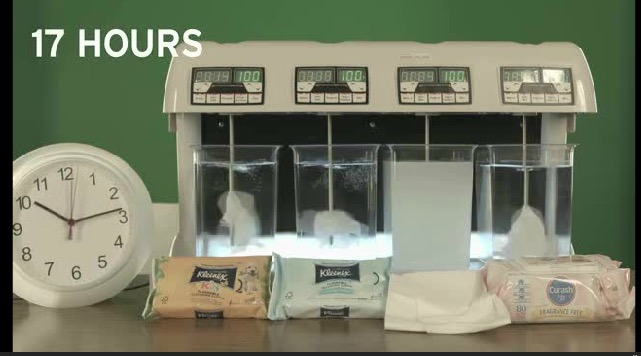
Wipes and wipes have been used everywhere. Walking on the aisle of any supermarket, you can now see wipes, make-up cotton, baby wipes, floor cleaning, toilet cleaning, toilet training and even products that promise to bring 'extra cleanliness' to users.
According to a UK market research company, the global market for washable wipes will grow by 12% to $2.4 billion by 2018.
In order to make it easier for consumers to use, we are told on the packaging that many of these wipes are now 'washable', which means you can throw it into the toilet instead of the garbage can, just like using toilet paper.
But can washable wipes really be washable?
Let's first understand what materials are wipes made of?
They are usually made of non-woven materials - usually fiber materials, such as cellulose from wood pulp, sometimes reinforced with polymers such as viscose. Non washable wipes include man-made fibers such as poly (ethylene) or poly (propylene) to increase strength.
The spun fiber forms a bonding pad, and then the adhesive and other materials are added to make the sheet. Then according to the application of product design, detergent, preservative and other chemical components can be added.
Washable wipes usually use shorter fibers than non washable products, and use special treatments to help them break down more quickly after use.
In such a product design, will wipes cause clogging?
Because the wipers are designed to be highly wet and strong material, i.e. they need to have high strength when wet in water, so they are stronger than ordinary toilet paper, which means that they will not easily decompose when washing, and may block the pipe pump in the sewage system. They can also combine with the fat in sewers to form 'fat bunkers' that clog pipes and have to be removed mechanically - at a high cost. Of course, most of the clogging of sewage system is caused by people flushing non washable wipes into the sewer.
At this year's 'wet towel world' conference, Dave Rousse, President of Inda, American non-woven fabric Association, presided over the meeting and described the current situation of the drafting work of the washable product guide.
'We have successfully worked with four major wastewater treatment associations to develop a new code of practice covering 93% of wipes sold on the market and 7% designed as washable wipes,' he said. 'It shows that both sides are taking a rational and reasonable approach to change.'
However, in January this year, the cooperation between the non-woven industry and stakeholders in the sewage treatment industry has ended, and the introduction of the fourth version of the dispensable standard (gd4) has stagnated. The wastewater treatment industry has written to Inda that they are concluding these efforts because there has been no meaningful progress since May 2016.
According to Inda, wastewater treatment communities adhere to much stricter standards than are necessary.
Jim Loftus, Inda's director of technical affairs, said: 'if the industry accepts the pass / fail criteria that sewage treatment plants adhere to, every washable wipe on the market today will not pass these criteria. This means that each washable wipe is not compatible with the waste water system. This is not acceptable to the industry. '
In fact, Inda admits that it is a growing problem that baby wipes are not properly flushed into the sewer. A recent analysis of the blockage in New York City's underground pipes shows that, based on seven years of analysis, 38% of the materials are non washable baby wipes
At present, there is no mandatory test requirement for the products marked on the market as washable. Inda, a non-woven industry association in the United States, and Edana in Europe have worked with water industry research institutions since 2008 to develop voluntary testing guidelines for their member companies.
The guide includes a series of tests that are classified as washable products. Tests include whether the product passes through regional pipelines, blocks domestic or municipal sewage pumps, and the rate of decomposition under various water treatment conditions.
In order to distinguish and use more conveniently at the same time, consumers are told on the product packaging that many wipes are now 'washable', which means you can throw it into the toilet instead of the garbage can, just like using toilet paper.
But can 'washable' wipes really be washable?
According to data from water treatment providers in Australia, the answer is No. It costs about $15 million a year, and it's growing, and they say the clogging is mainly caused by wipes.
Market regulators don't quite agree. On December 12, 2016, it announced a court action against Kimberly Clark Australia and pental, manufacturers of washable wipes, alleging that their products were false or misleading statements - which could be broken down like toilet paper.
New Zealand 'water' magazine published an article that said wipes blocked sewers and drainage pipes, resulting in unnecessary pipe dredging costs.
Peter Whitehouse, head of water New Zealand, said the problems reported by water authorities in Australia and Australia were largely due to the fact that the washable wipes would not be broken down and would form stumps, causing pump station blockage, wet well plugging and sewer overflow.
Let's see how consumers understand the concept of 'washable'
In July 2016, ACCC conducted a survey of 1679 Australians aged 18-75, asking them what they thought the word 'can be broken'.
When asked 'if a bag of disposable wipes is marked as' washable, 'would you expect the wipes not to clog the toilet?' 73% responded that 67% thought the products could be broken down like toilet paper.
For hopeful consumers, as research by ACCC has shown, divisible claims are confusing. Manufacturers are touting the terms 'dispersible' and 'biodegradable,' while the water industry is urging the public to keep all wipes out of the pipes.
Darren Clancy, a plumber, said bluntly, 'it's crazy to say that these products can be washed away... They haven't broken down, and in some cases they can't even discharge the pipes. I've been doing this work for 30 years, and the blockage caused by wipes is the worst situation I've ever seen.'
'ACCC claims that Kimberly Clark and pental gave the impression that they were suitable for flushing into toilets in Australian families, but this is not the case,' said rod Sims, President of ACCC
Using a mixing device designed to replicate a wastewater treatment system, the New Zealand Consumer Association tested 11 wipes and plain toilet paper labeled as washable, each in a blender for 70 minutes.
After a few minutes, toilet paper begins to decompose, and after 70 minutes, it completely decomposes. However, all washable wipes in the blender are still intact, except for some small tears.
In 2013, consumer reports, a consumer organization in the United States, did a similar test. It puts four kinds of washable wipes in a table mixer filled with water. Each wipe takes at least 10 minutes to break into small pieces.
In fact, in terms of cost, 'compared with ordinary toilet paper, washable wipes are not cheap, about $5.42 and $5.99 for 40 wipes, each of which is about 12-15 cents.
Let's take a look at the comparative test conducted by choise, an Australian market institution

Choose also conducted other similar tests, with four samples provided by Sydney water.
Kleenex cottonelle washable facial towel (2015 test product) (2 pcs.)
Quilton gold 4 layers toilet paper (8 sheets)
Kleenex clean ripple washable wipes (2 pcs)
Kleenex clean ripple washable wipes (2 pcs)
The test results show that:
Sample 1: original Kleenex cottonelle washable facial towel
During mixing, it is divided into two or three large pieces, and the water is basically clear. When it was removed from the water after 21 hours, it was found that the hands were gently separated into smaller pieces. However, if the wipes are maintained in sufficient structural integrity and size, it is still possible to block any obstruction or form a blockage in the sewage system.
Sample 2: quilton gold 4 layers toilet paper
Completely disintegrated in a few minutes. Some very small lumps remain on the mixing arms and paddles, which are very easy to separate when removed from the water. The water turns opaque milky white.
Samples 3 and 4: Kleenex clean ripple flushable wipes
Compared with the previous generation wipes, the new wipes are easier and faster to separate under agitation, but they are much slower and less dispersed than sample 2 (toilet paper).
Sample 3 was decomposed into several small pieces and several large pieces in one hour. As a result, the water becomes slightly milky white. 21 hours later, it was found that large pieces were easily broken.
Sample 4 is broken down into many small pieces and several large pieces. Water becomes more milk like than sample 3. The difference between the results of samples 3 and 4 may be attributed to the early manual intervention of sample 4 in the test, leading to the earlier decomposition of its sheet. In one minute and five minutes, there are some splits. The sample is easy to be torn by hand, but it is still large. At one hour, further splitting took place, and the sample was even more easily torn by hand, although a few large pieces remained, one of which remained largely intact. 21 hours later, the larger pieces were removed and found to be easily torn by hand.
However, the larger fragments of the wipes have maintained sufficient tensile strength, integrity and size and may still form obstacles. If such objects are washed down frequently, debris may form a blockage in the sewage system over time.
Think twice before you plan to put a wet towel in the toilet.